Fly Fishing in the Garden of Eden
Discovering an untapped golden dorado fly fishing Mecca deep inside the remote Bolivian rainforest
By Matt Harris, www.mattharrisflyfishing.com
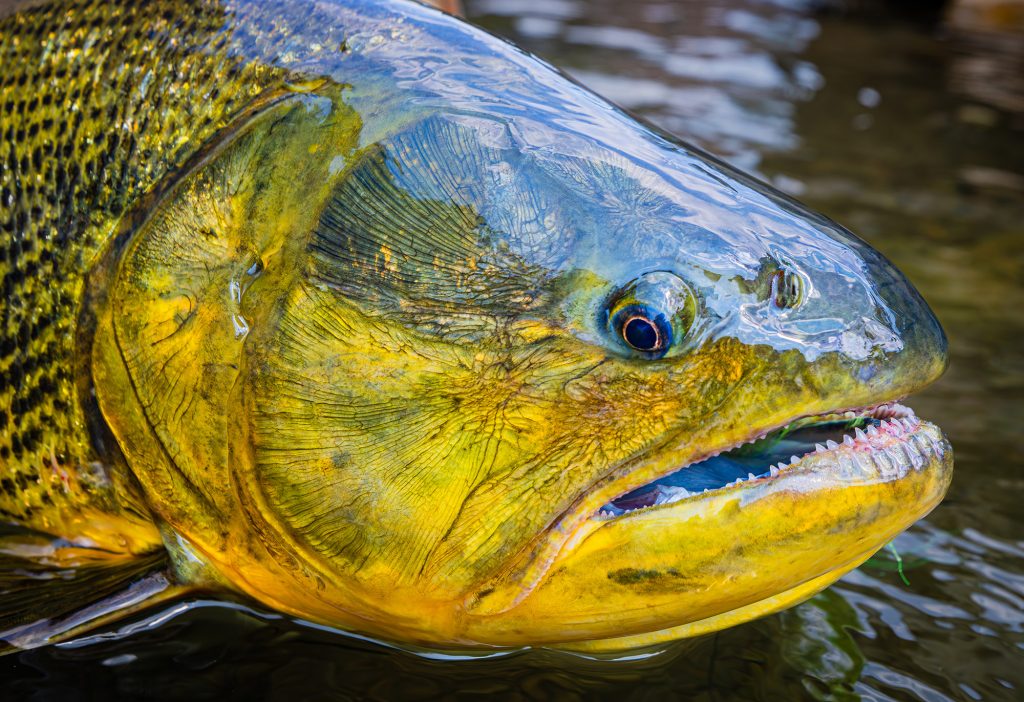
I wake long before nature’s alarm clock begins its fanfare. Padding out into the first half-light of dawn, I stand on the boat’s decking, sip my coffee, and listen to the enchanting, lyrical music of birdsong spreading across the vast canopy of the Bolivian jungle.
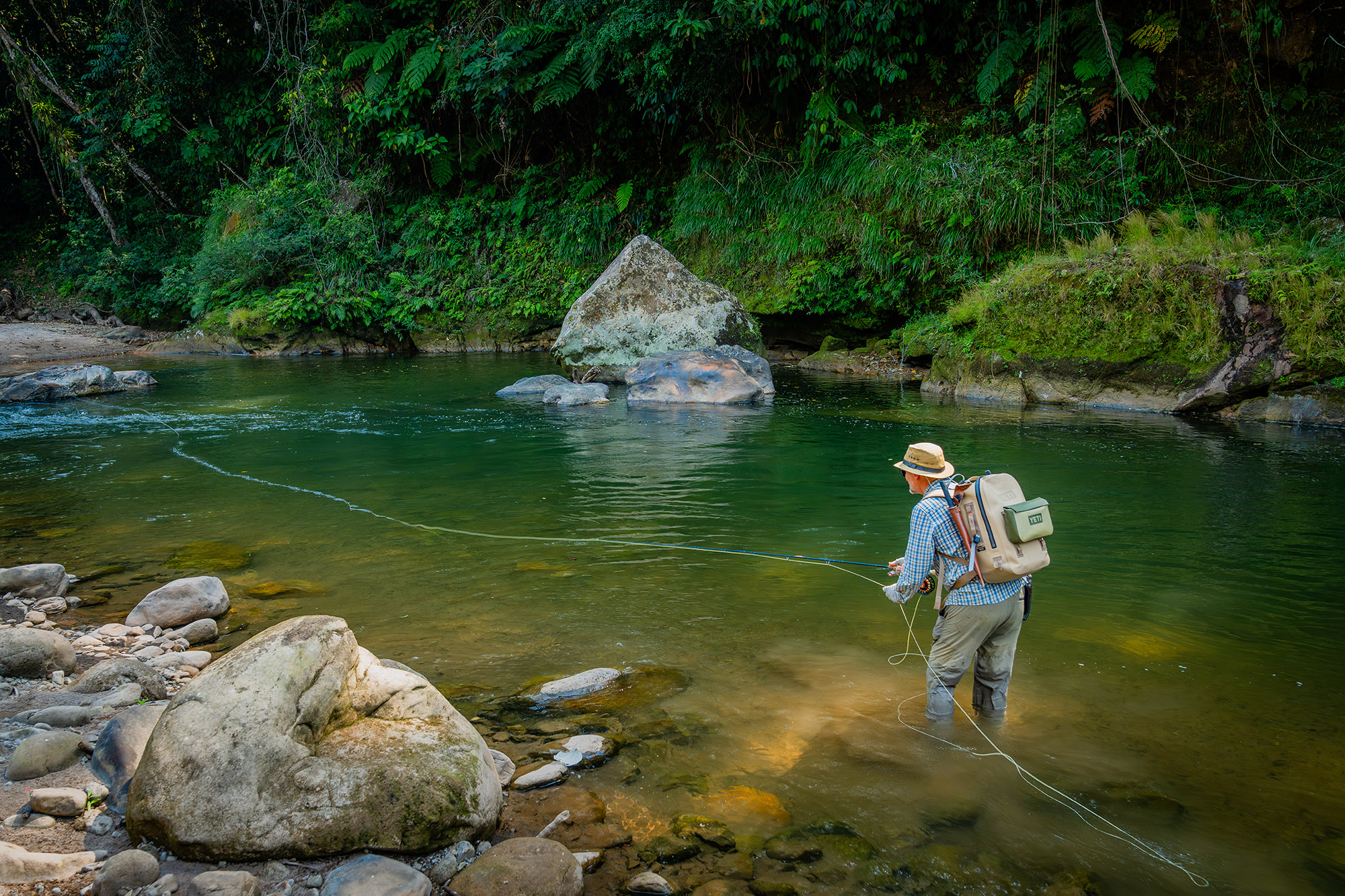
I greet my fellow anglers, and after devouring a delicious breakfast, we gather our gear and walk through the trees to the helicopter pad. As the last of the early morning mist clears, our pilot, Cappi, lifts the little Robinson helicopter into the clean, clear air as we climb over the treetops, exposing the vast carpet of emerald, green stretches out for what seems like a million miles in every direction. Cappi skims us over endless swathes of dense, pristine jungle, working the helicopter over a high ridge and then easing us down into the serpentine valley of the Slotosama that meanders through the high forest.
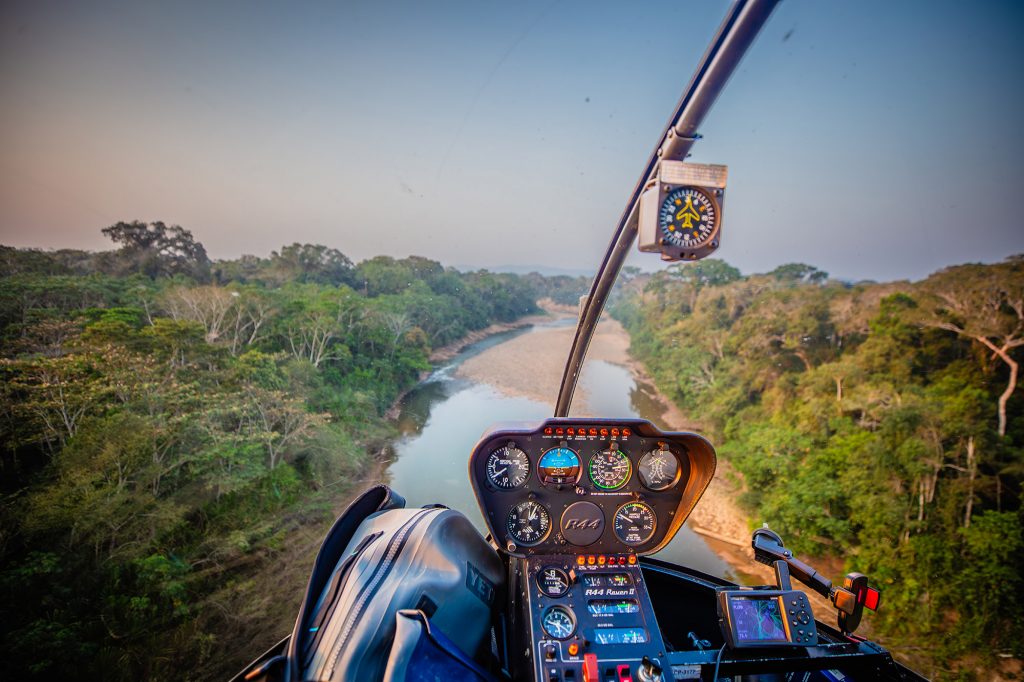
Below us, the tumbling freestone tributary snakes between the trees, glimmering brightly against the deep dark shadows of the jungle. We swerve and slalom upstream, swooping into the narrowing canyon of the valley and heading even further up the meanders of this river that appears to have no end.
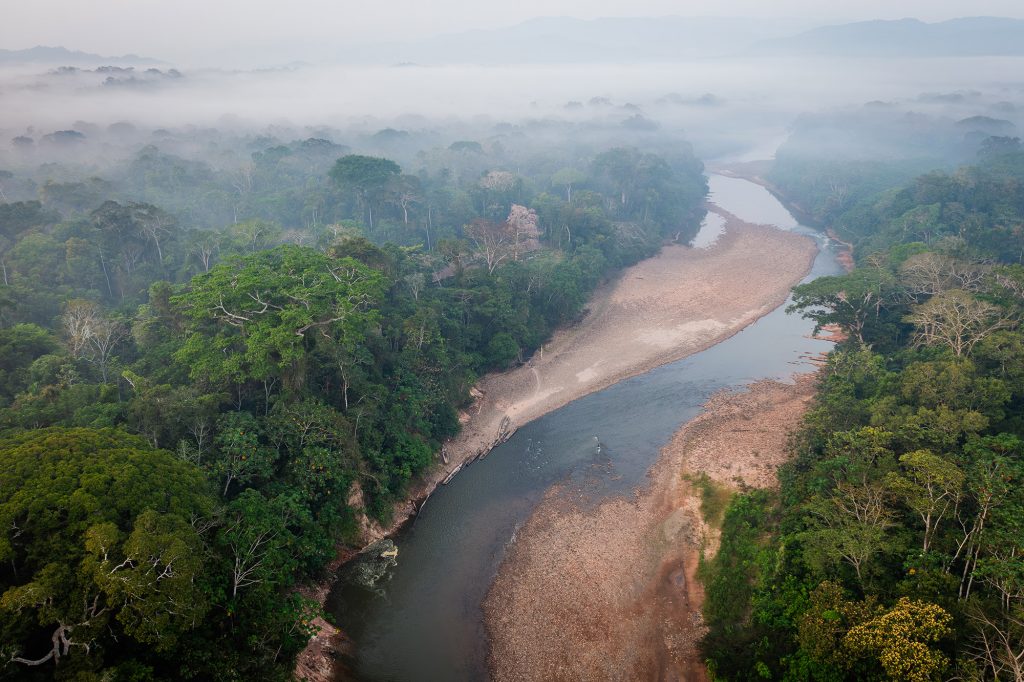
Like my fortunate friends, I am fascinated by the countless possibilities of virgin pools and ripples. Peering into the waters below from the little Robinson, I exclaim excitedly over the headphones as a large moturo catfish emerges out of a deep pool and glides onto the shallow flat adjacent.
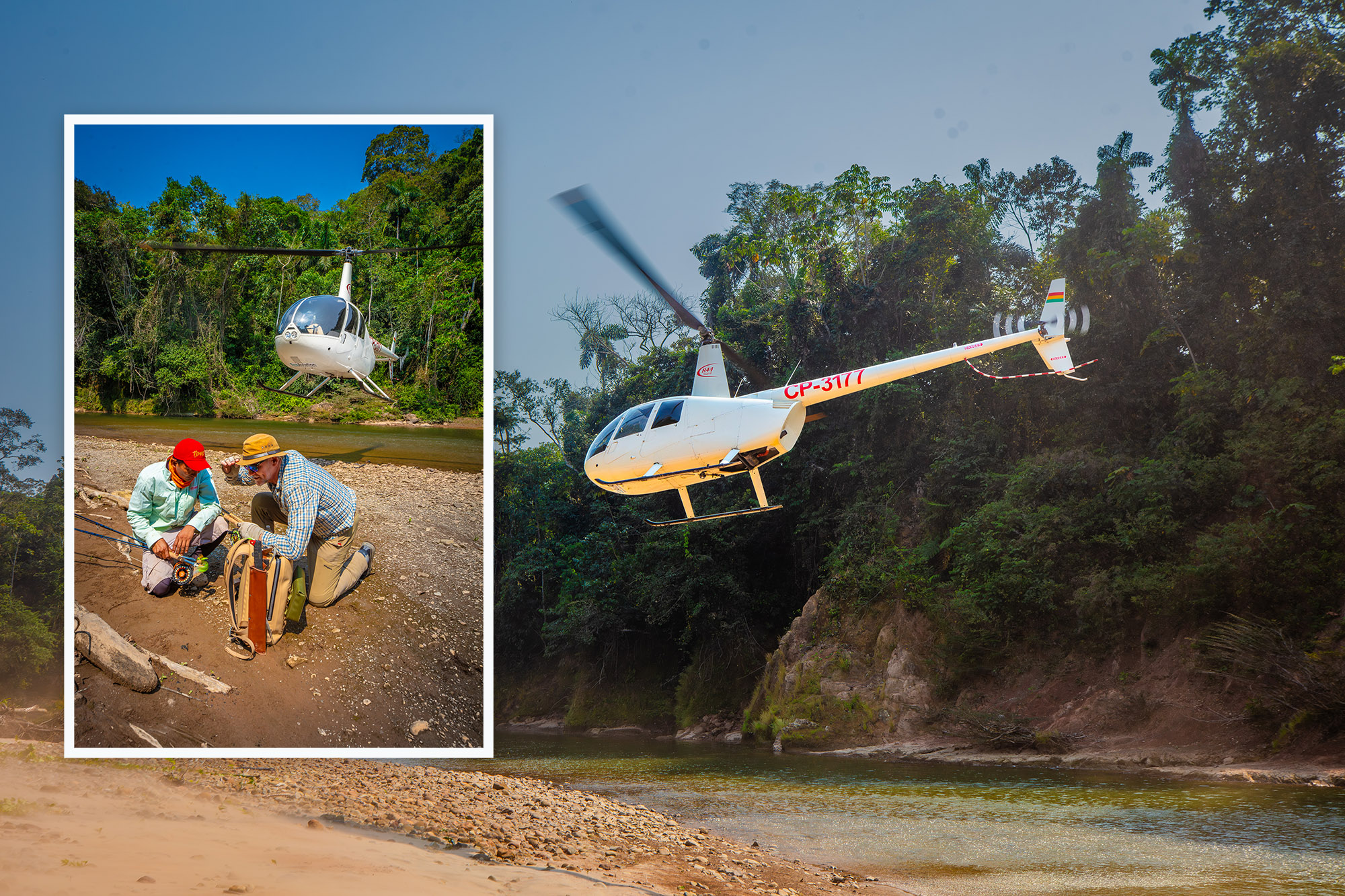
Finally, my fishing partner and guide, Marcelo Perez, sees what he’s looking for - a wide sandy beach on a broad right-angle bend in the river. Cappi circles the spot, assessing the approach, and then expertly guides us down gently onto the sand.
We wriggle out of the little Robinson, check all is secure, and then hunker down as the helicopter rises into the early morning sunshine, banks to the right, and disappears. We are utterly alone in the very heart of the jungle. It is possible that nobody - not even the indigenous Chimanés - has ever set foot here in this remote and untouched spot. It feels like fishing in the Garden of Eden.
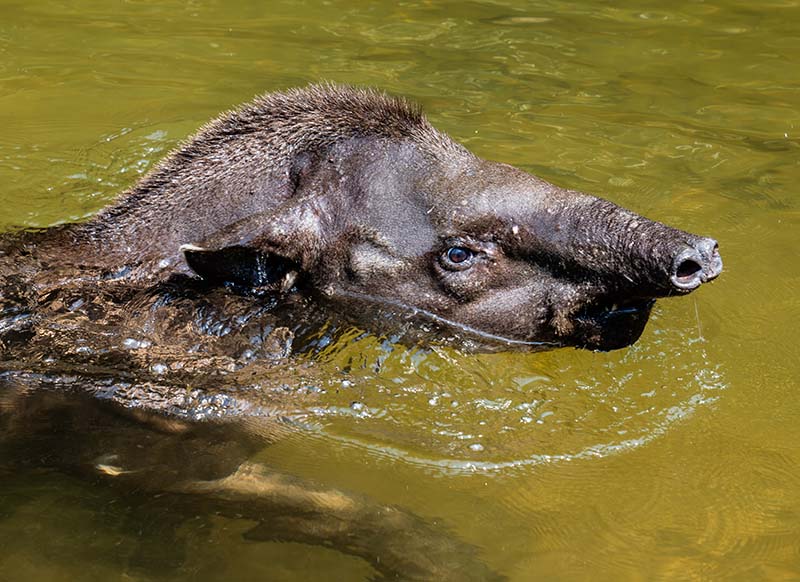
Up ahead, a tapir shuffles down to the riverbank and glides with surprising grace into the cold, clear water. We collect our gear and head upstream. Wet wading across the stream, we approached our first pool. Our charismatic Chimané guide, Cachambimbi, lifts his hand in a simple, authoritative signal for us to wait here. Then he creeps forward and scans the pool. After a few moments, he mutters an exclamation in Portuguese. Marcelo shoots me a grin - “Big one!” he grins. “You have a go.” I make a half-hearted protest, but Marcelo insists.
I creep forward to join Cachambimbi. There, beneath a fallen tree trunk, a sleek dorado, unmistakable in its gleaming golden livery, hangs motionless in the crystalline currents of the stream. It is surprisingly well-camouflaged, but its vivid, lemon-yellow fins betray it, bristling with aggression as it waits for a sabalo baitfish to wander into its lair. Cachambimbi is right. It is, indeed, a big one.
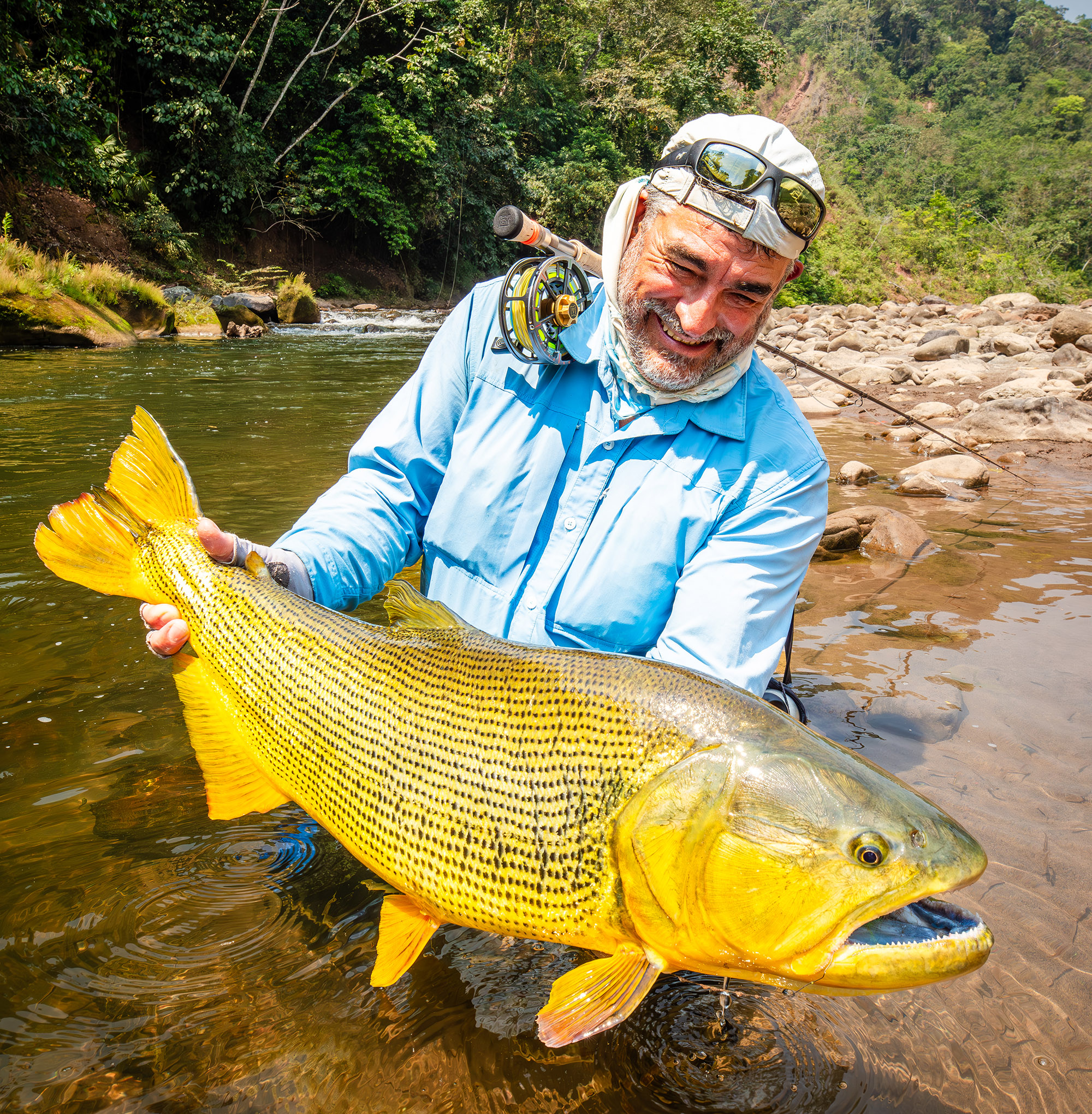
I’m shaking as I lengthen the line, launching the big baitfish imitation and using the powerful Hardy Marksman Z ten-weight rod to drive the fly across the long yards between myself and the fish. I drop the fly a couple of yards above the fish, and as Marcelo has advised, I start to strip the fly back even as it's still falling through the air. A moment after the fly touches the water, there is a blur of golden fins, a violent swirl, and a savage, wrenching take. I respond with a sharp strip-strike, and I am rewarded with an unforgettable sight as the enormous dorado instantly jackknives up into the steamy air of the jungle, sparkling gold against the dark green canvas of the forest.
This is the fish I’ve traveled halfway around the world for - I could fish here for a season and not hook a fish this big. I pray shamelessly and hold the fish hard, conscious of the treacherous rock garden at the tail end of the pool and the sunken tree at its head. The fish is enraged and rockets back up into the air, shaking its head ferociously and crashing wildly around the pool. At first, all I can do is stay tight and pray some more, but slowly, I start to gain control, and I feel the scales are starting to tip in my favor. Finally, I draw the big dorado towards the outstretched hands of my guide. It looks huge in the crystal waters. Cachambimbi leans forward and expertly grips the huge fish firmly by its great tail. He lets out a whoop of infectious delight as he struggles to lift the fabulous golden treasure briefly out of the water for me to see. It is a breathtaking sight. I hug Cachambimbi as he laughs and struggles to hang onto the fish. Then I turn to my friend Marcelo. I know I’m laughing and grinning like an idiot. “If I don’t catch another fish this week, I won’t care!” I splutter. Marcelo punches my arm and, with a warm smile, says simply “Welcome back to Tsimané.”
Well over a decade ago, I was privileged to experience the amazing fledgling fishery that Marcelo Perez and his partner at Untamed Angling, Rodrigo Salles, had somehow managed to discover and establish deep in the remote Bolivian rainforest. I spent two weeks in the Bolivian Jungle, fishing the Securé, the Agua Negra, the Pluma, and the Itirisama rivers. I caught a handful of big dorado on that trip and experienced one of the great adventures of my life.
In the intervening years, Marcelo and Rodrigo have done some extraordinary work and have found a genuine way to protect and sustain this special environment and the indigenous communities that live on its banks. In part due to Untamed Angling’s good work, the indigenous Chimané tribespeople are still able to live very much as they did long before Pizarro and his murderous conquistadors first splashed their way up the beach in the early 1500s.
The Chimané may now sport the occasional LA Lakers and Real Madrid shirts gifted them by traveling anglers, but they essentially live their traditional lifestyle, hunting in the forests for wild boar and tapir, and eating simple organic foods like cassava root and sabalo and catfish caught in the river with bow and arrow. As a result, they are amongst the healthiest folk on earth. A study published in 2017 found that the tribe has what are essentially the healthiest hearts in the world, with the lowest reported levels of coronary artery disease of any population studied.
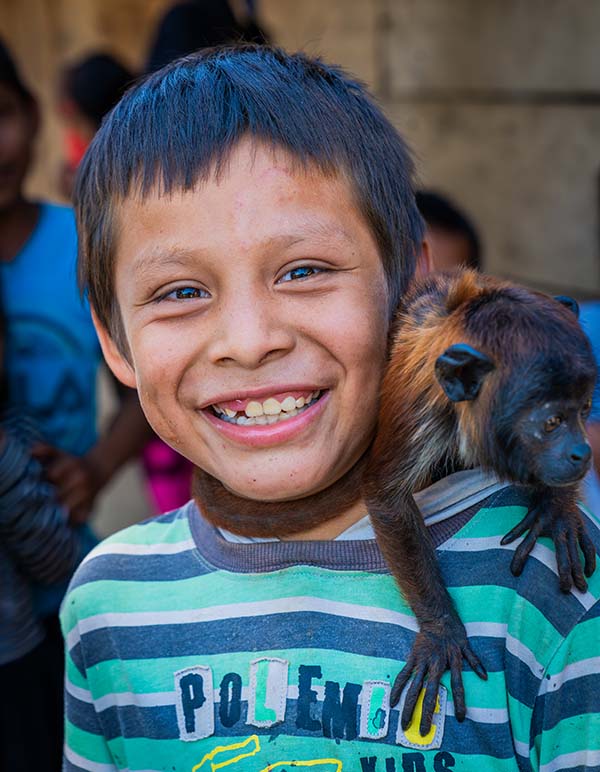
However, the Chimané face other threats: They are threatened by the relentless spread of the modern world and what we often call “progress” - logging, oil and gas exploration, and a myriad of other destructive and unsustainable practices that potentially threaten to gobble up the jungle and destroy this precious, magical environment.
Intriguingly, fly fishing can help offer a way forward. Marcelo and Rodrigo have forged a mutually beneficial partnership with the Chimané tribe, which brings strictly catch-and-release fly fishers into their vast, pristine, and biodiverse region extending to more than 12 million hectares (nearly 30 million acres). These anglers can fish in a sustainable way while making a significant contribution that helps in preserving the region and significantly contributing to the local community. This helps the Chimané people to maintain their pristine environment and their traditional way of life.
The capital that the anglers bring in helps to fund park rangers and guards and provides income and resources for the local communities, while the project also provides jobs for the indigenous people, too. The Tsimané operation employs 300 indigenous and 100 non-indigenous locals, and the Untamed Angling operations in Bolivia and Brazil now provide more economic benefits for indigenous peoples than any other tourism project in Latin America.

The Tsimané Project goes further: it works with the Bolivian Government to table proposals that further protect and nurture the environment and retain the rights and cultural traditions of the Chimanés. The fishing camps are constructed entirely from sustainable materials, and all inorganic refuse is scrupulously removed from the park and taken to the local city of Trinidad via dugout canoe where it is disposed of. The project also commissions numerous scientific studies to learn more about the dorado and the other fish that make up the fishery, to help further understand and protect them. Angler numbers are strictly limited, so the pressure is minimized on the fish stocks and on the environment, making the operation sustainable year on year.
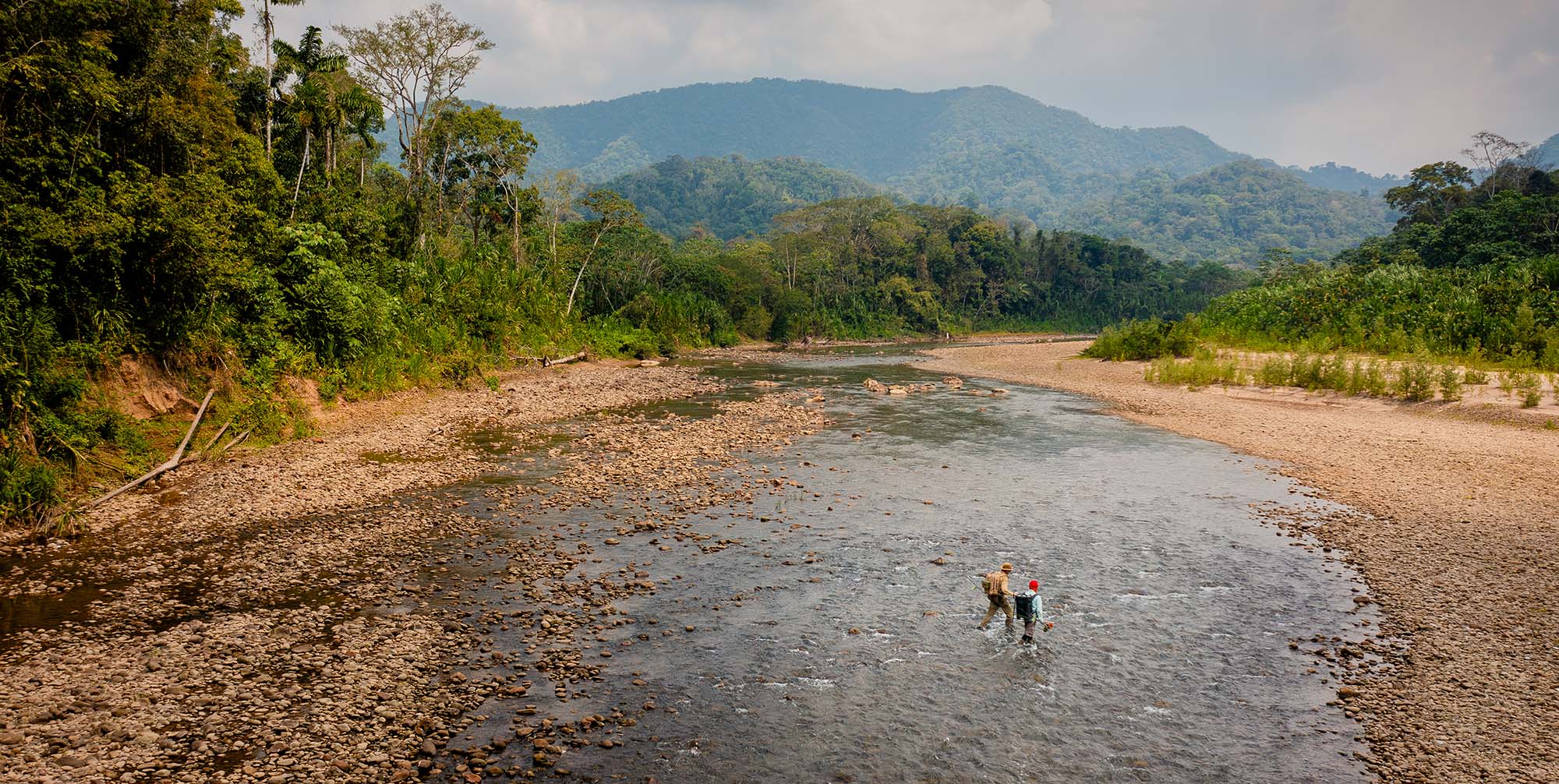
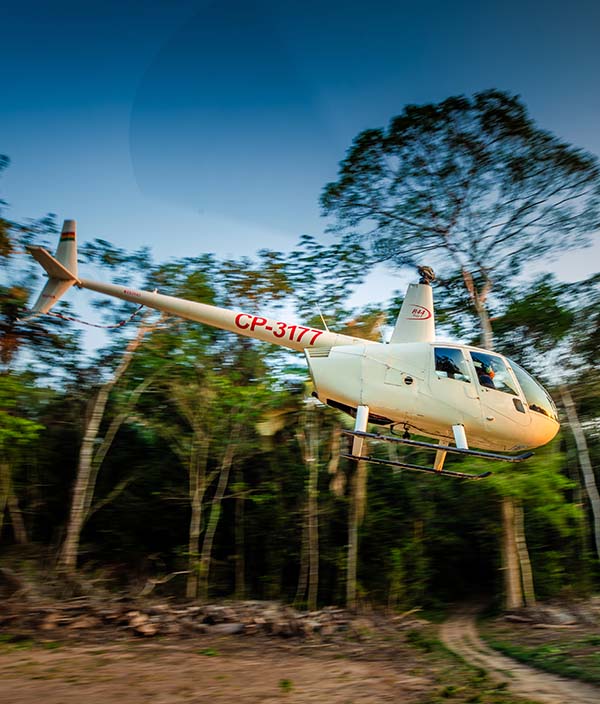
Tsimané consists of three beautiful camps - the Securé Lodge, the Agua Negra Lodge, and the Pluma Lodge. Each of them offers stupendous wilderness fishing, but to my mind at least, the jewel in the Tsimané Project crown is the helicopter program, which operates out of the Pluma Lodge. Anglers who sign up for this program get to enjoy one of the most magical experiences in all of fly fishing. Every day, Cappi will fly you and your guides out to one of the numerous rivers accessible from the Pluma camp - spellbinding little rivers like the Itirisama, Slotosama, and Namajti that tumble down from the mountains. Each of these little gems will capture your heart. Some of the waters you will fish on may well have never seen an angler - or even a person - ever before. All of them offer unforgettable sight-fishing, not only for the show-stopping dorado but also for skulking but eminently catchable moturo and sorubim catfish, the shimmering, dry-fly sipping Jatorana, and the unsung hero of the Tsimané operation, the pacu.
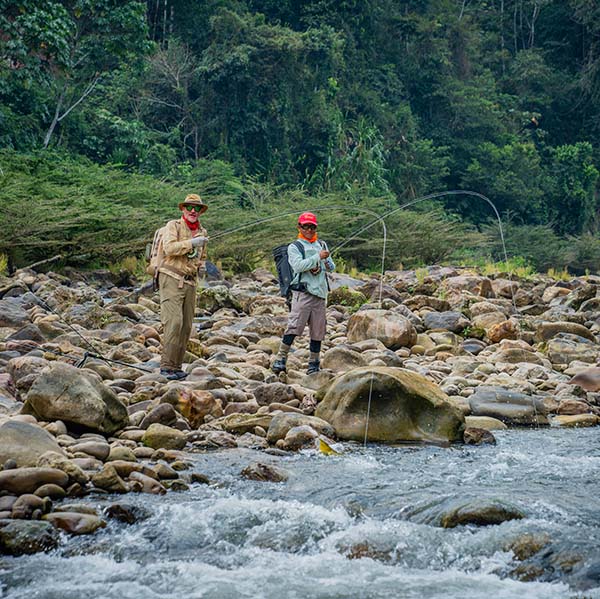
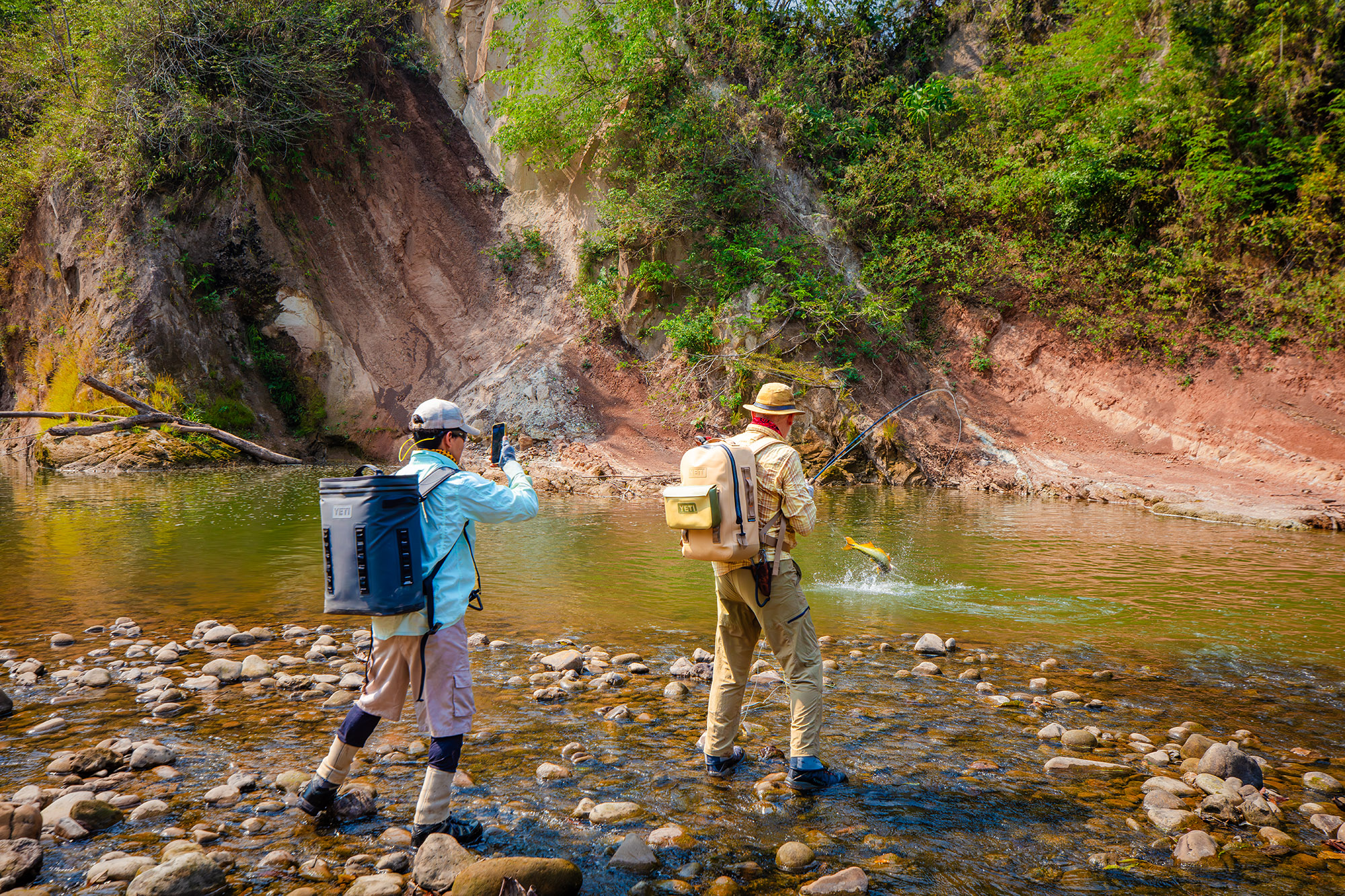

Dorado are, of course, the main attraction - big, brutal, and sporting their absurd sparkling gold paint job - how could they not be? Salminus can be anything from absurdly voracious to impossibly fickle, and I often managed to spook them, sometimes before I even managed to get the fly in the air. However, when I did manage to hook one, they put on a high-flying tour-de-force that would make even a tarpon blush. They are usually best approached with large streamers fished fast, but they will on occasion take surface poppers and even dead-drifted dry flies. Believe me, catching a trophy dorado is a truly unforgettable experience. Although they lack the dorado’s brassy charms, pacu are another wonderful fly rod species - they combine the neurotic shyness of a permit, the diffidence of a wild brown trout, and the bulldozing power of a jack crevalle.
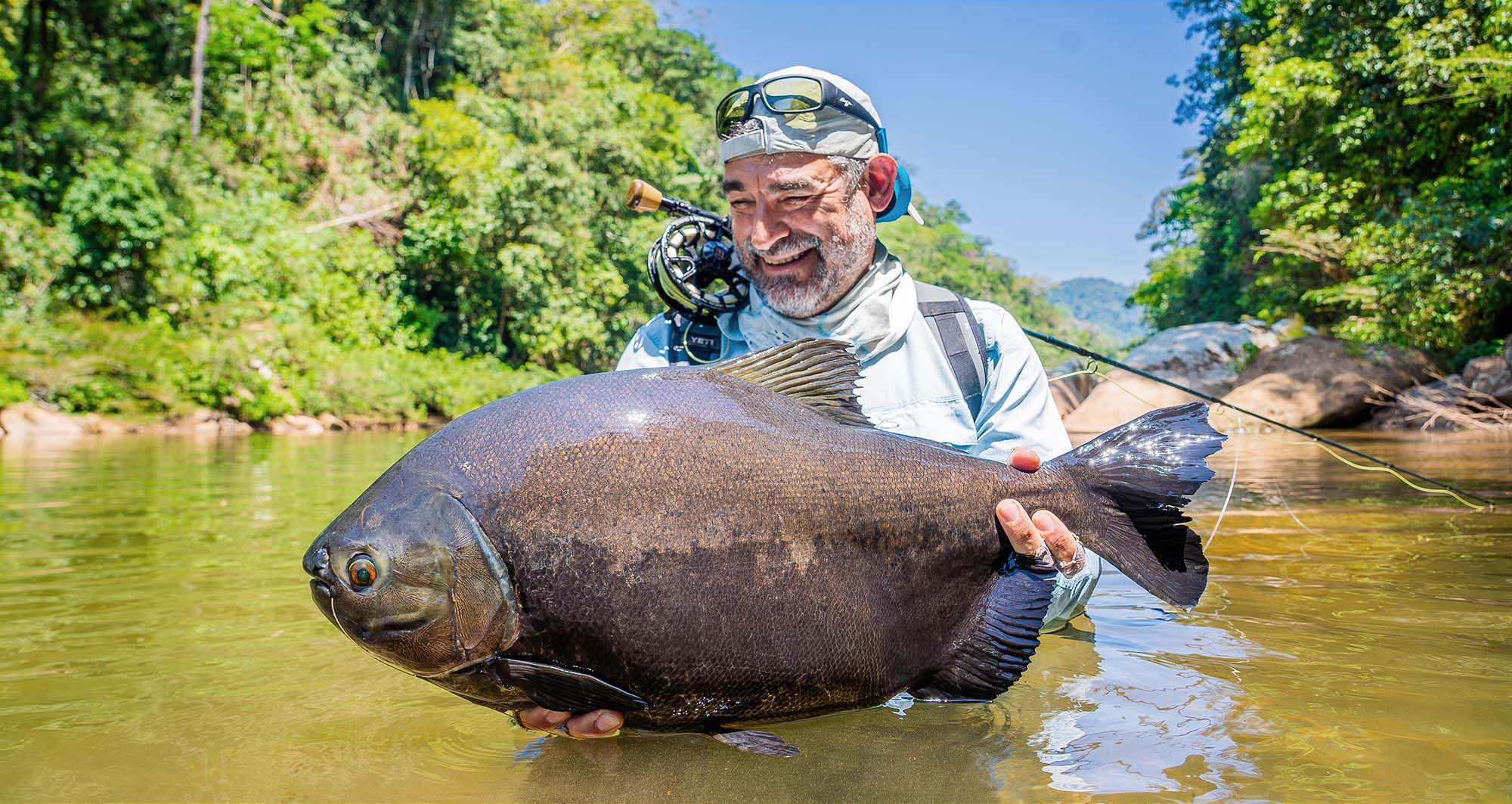
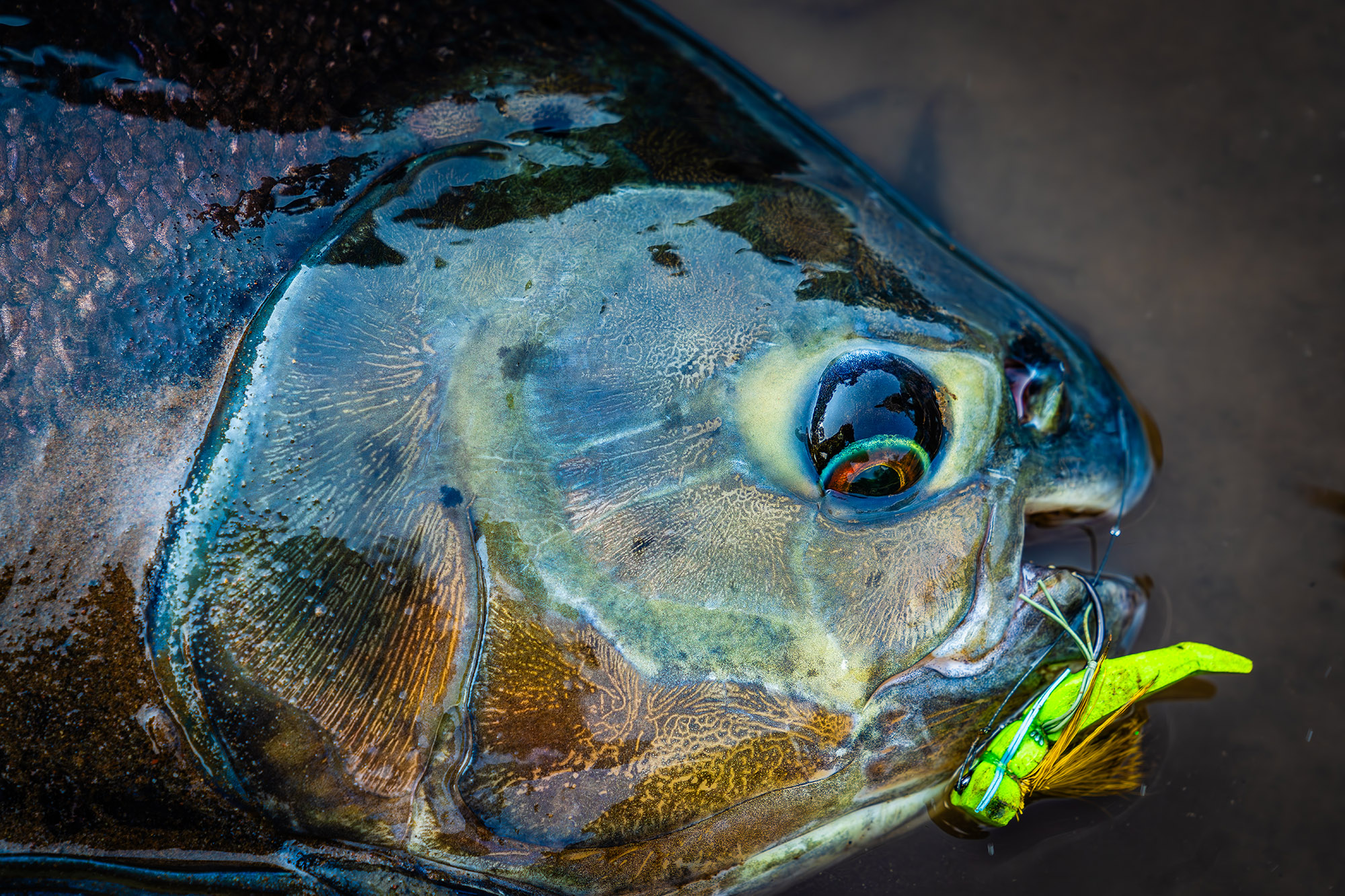
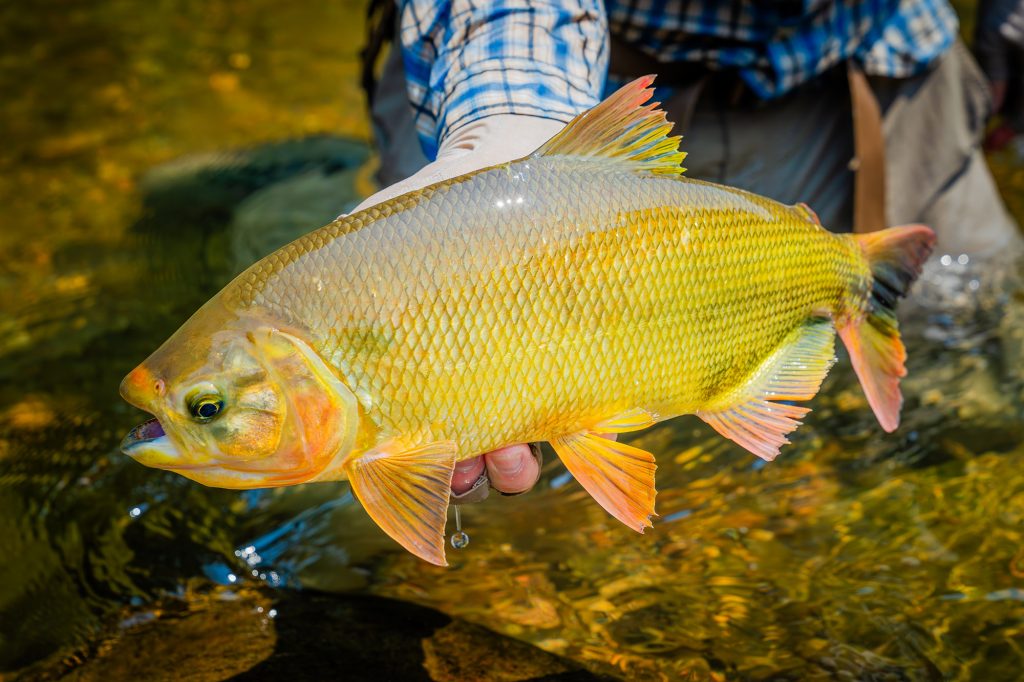 When I first traveled to Tsimané all those years ago, pacu were considered very tough to catch. They were mainly targeted with small streamers or ‘fruit’ flies - plastic beads that mimicked berries that fell from the overhanging trees. Now, Marcelo favors insect imitations fished dry and dead-drifted à la trout fishing. The celebrated Argentinean fly tyer Hernan Tula sent me some exquisitely tied grasshopper and cockroach imitations to try, and if presented quietly and accurately, they were deadly. This was a wonderful and exhilarating sport. If you can drop the fly in front of a big pacu without triggering that neurotic instinct to bolt for cover and if you can then achieve that all-important drag-free drift, you will get to watch your quarry amble gently up and suck the fly from the surface. Set the hook and hang on tight as your prey rockets around the pool like a demented berserker. A word of warning - like dorado, pacu have some serious dental attributes. Pacu have a formidable array of what look for all the world like human molar teeth. Employ a stout wire trace and mind your fingers. You have been warned.
When I first traveled to Tsimané all those years ago, pacu were considered very tough to catch. They were mainly targeted with small streamers or ‘fruit’ flies - plastic beads that mimicked berries that fell from the overhanging trees. Now, Marcelo favors insect imitations fished dry and dead-drifted à la trout fishing. The celebrated Argentinean fly tyer Hernan Tula sent me some exquisitely tied grasshopper and cockroach imitations to try, and if presented quietly and accurately, they were deadly. This was a wonderful and exhilarating sport. If you can drop the fly in front of a big pacu without triggering that neurotic instinct to bolt for cover and if you can then achieve that all-important drag-free drift, you will get to watch your quarry amble gently up and suck the fly from the surface. Set the hook and hang on tight as your prey rockets around the pool like a demented berserker. A word of warning - like dorado, pacu have some serious dental attributes. Pacu have a formidable array of what look for all the world like human molar teeth. Employ a stout wire trace and mind your fingers. You have been warned.
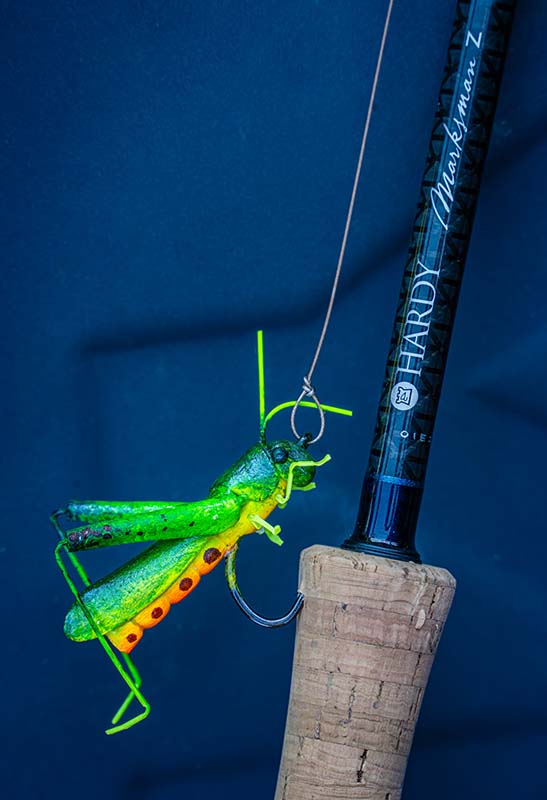
There’s plenty more to keep you entertained: Jatorana are playful and sip dry flies willingly if you can put one in front of them without spooking them. Ignore the skeptics: moturo and sorubim catfish CAN be caught on fly – sorubim are often relatively easy if you spot one on a sand flat, but moturo have a reputation for being tougher to catch. They often skulk in the deepest holes, but Marcelo and I experienced a remarkable double hook-up after finding a group of perhaps a dozen of these curious creatures sunning themselves on a sand flat. Sadly, both threw the hook. However, Marcelo has since sent me an image of a huge fish that he caught on an Enrico Puglisi baitfish pattern, and other friends like my friend and Ladies World Champion, fly angler Katka Svagrova, have caught moturo, too.
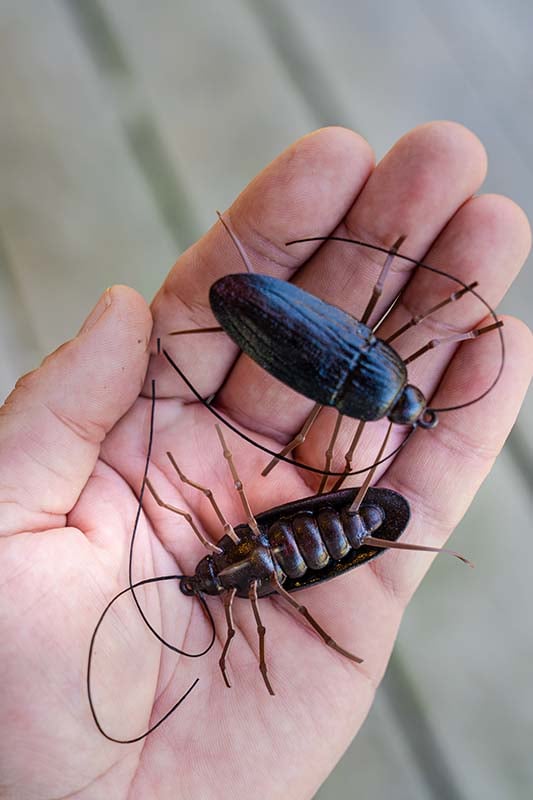
Too soon, at the end of each special day, Cappi zooms down to pick you up and fly you back over the magic of the darkening jungle in time for icy caipirinhas and a delicious supper. The helicopter program is not cheap: I accept that few anglers will be able to afford the eye-watering price tag. However, those who can do so, will not only enjoy what is undoubtedly the fly-fishing trip of a lifetime, they will also get to do so with the knowledge that they are contributing to a sustainable program that will help significantly in protecting this huge area of pristine and fragile rainforest. This, in return, will allow Cachambimbi and his Chimané tribespeople to continue to live as they have done for centuries, in their magical environment. In their Garden of Eden.
More Information:
Matt Harris is hosting a trip to Tsimané in 2024. You can contact him at [email protected].
You can learn more about Tsimané and book a trip by clicking here.
Untamed Angling has done great work with other indigenous communities in a number of other Amazon regions, including their Rio Marie, Pirarucu, Kendjam, and Xingu fisheries. Learn more by clicking here.
You can read about Tsimané in Matt’s new book by clicking here, which ships worldwide.

